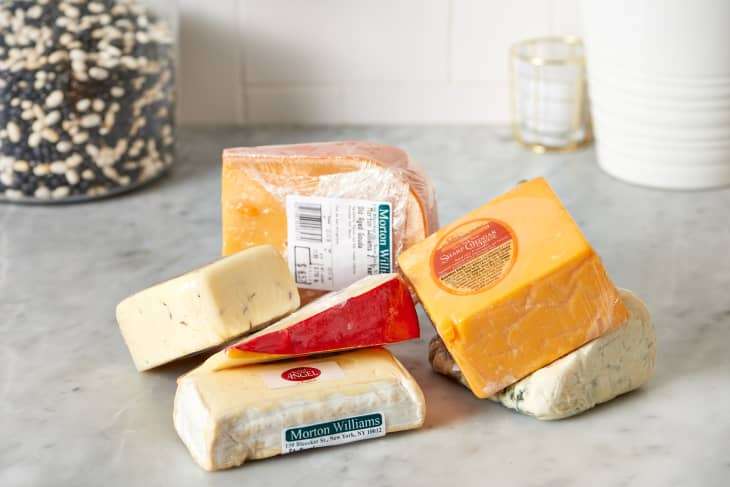The 6 Food Choices That Saved Us When My Husband Lost His Job
When my husband came home from work and told me that the next day would be his last at his job, we went into immediate emergency cost-cutting mode. And we quickly learned that the easiest place to slash the budget, in principle, was one of the most painful in practice: our food expenses. We love food—eating it, cooking it, talking about it, sharing it. And an embarrassingly large percentage of our budget went to food—good ingredients, kitchen equipment, eating out.
But there was no choice, so red-alert budget went into effect for the almost six months that we lived on one freelance income, one unemployment check, and rapidly dwindling savings. Here are the choices we made that kept us from overdrawing the bank account during that time.
1. Eating at home.
Of course this made the biggest difference. Eating out is expensive. We made an exception for a good friend’s milestone birthday dinner, and with our new frame of mind, were aghast at how much a basic dinner cost. With our new perspective it was downright appalling to spend many, many meals’ worth of funds on just one dinner… that wasn’t even very good! Now, full disclosure, as a food writer there were a handful of times I was invited to media events or “hosted” dinners, so I did get to have meals out a few times. (Trust me, I really appreciated them! But some I had to turn down because we couldn’t afford what the tip would be on a multi-course fancy dinner.)
2. Cooking from scratch, with no shortcuts.
One real luxury that came with my husband’s unemployment was time. Even though he’d enrolled full-time in school, he still had more time and flexibility than when he was at his job. So forget canned beans—we’d cook from dry. A whole pot of soup would cost pennies and feed us for days (and was way better than with canned beans). No more pizza dough from our favorite pasta shop—we had flour and water and yeast, so we made our own. Whereas before we’d shopped for weeknight meals around convenience—pre-chopped this, pre-washed that—now it was all about buying ingredients in their most basic form. So long, bags of cauliflower florets. Hello, heads of cauli and a knife!
3. Stretching everything.
We got into a routine of roasting a whole chicken, then using the carcass to make stock (besides, of course, making chicken salad or other leftovers). Sure, store-bought stock is only two bucks, but there was no such thing as “only two bucks” when we were staring at our budget forecast. With some homemade dumplings, we had the most amazing meal for, seriously, pocket change. Obviously there would be no throwing away of leftovers, so some meals were a complete mish-mash, but no less tasty for it!

4. Limiting meat and dairy.
Cutting back on expensive meat wasn’t that hard; as former vegetarians we’d gone years without it and never got into a daily habit with it. Oh, but cheese? I won’t lie… I had some low moments standing in the cheese section at the grocery store when all I wanted was a nice, gooey wedge of brie but it wasn’t in the budget. For that matter, very little cheese was in the budget. Store-brand shredded mozzarella for pizza, maybe, but snacking cheese? It was too rich for our blood. So were my beloved Yasso frozen yogurt pops (one of the first things I bought when we were back to a more flexible budget!). We limited red meat, especially, to once a week, if that, and made it extra fun; if burgers were on the menu we’d also fry potatoes, roast Brussels sprouts, and slather everything in homemade Shack sauce (we weren’t going for health points here!).
5. Trying new things and making it fun.
There was definitely some emotional stuff that went along with the stress of the money situation. To keep our spirits up we tried to look at menu planning as a challenge like you might see on a cooking competition, and made it adventurous when we could. Our nephew once gifted us a rabbit he’d hunted; we’d never cooked a rabbit, but why not learn? (We fried it up and served it with carrots.) When we’d find a great cookbook at the library, we’d make something we’d never have time to when both of us were working. Treating it as a series of experiments, almost like a competitive event—how low can you go with dinner on a dime as your motto?—made it less dismal and more exciting.
6. Getting good at making cocktails at home.
Okay, yeah, booze wasn’t strictly a necessity. But bourbon is basically a food group where we live in Louisville, and drinks out weren’t going to happen. We found a new favorite bottom-shelf bourbon , and practiced our home bartending skills, using homemade simple syrup and even making our own bitters . If I say so myself, we can both make a pretty mean Old Fashioned now.
I can see, writing this, that we’ve slid back into some of our old ways now that nearly two years have passed. We both have full-time work and then some, so we’re definitely back to some convenience purchases. But some of these changes have stuck with us. Our current obsession is homemade gnocchi (that we make in bulk and eat for days). Meat is still more of a guest star in the kitchen, so it’s veggies, rice, and tofu for the win. Thanks to the Instant Pot, we still make beans from dried, and it was so not a hardship to make stock for a rotisserie chicken ramen. And the leftovers from that? We couldn’t wait to have it again the next night!
This post originally ran on Kitchn. See it there: The 6 Food Choices That Saved Us When My Husband Lost His Job